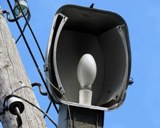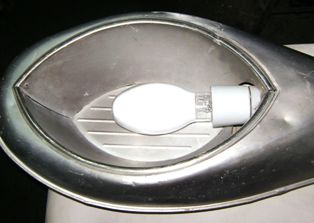Application of increased frequency for lighting installations with gas discharge lamps
 The presence of control equipment significantly increases the cost of lighting installations with gas discharge lamps, complicates their operation, requires significant additional consumption of non-ferrous metals and electricity, and also complicates the design of the lamps. For example, the price of existing ballasts is several times higher than the price of the lamps themselves, the power losses in the ballasts are 20 — 25% of the lamp power, and the specific consumption of non-ferrous metals in them reaches 6 — 7 kg / kW, t .is 2 — 3 times higher than the average consumption of non-ferrous metals in the lighting network.
The presence of control equipment significantly increases the cost of lighting installations with gas discharge lamps, complicates their operation, requires significant additional consumption of non-ferrous metals and electricity, and also complicates the design of the lamps. For example, the price of existing ballasts is several times higher than the price of the lamps themselves, the power losses in the ballasts are 20 — 25% of the lamp power, and the specific consumption of non-ferrous metals in them reaches 6 — 7 kg / kW, t .is 2 — 3 times higher than the average consumption of non-ferrous metals in the lighting network.
If we take into account other disadvantages of ballasts (unsatisfactory lighting of lamps in starter circuits, short service life of starters, reduced lamp life in a number of circuits, noise, radio interference, etc.), then it is clear that extreme attention is paid for the creation of rational ballasts. Currently, over a thousand different schemes and constructions of ballasts are known.Such a large number of developments confirms the need to improve existing ballasts and shows the difficulty of the task and the lack of sufficiently good solutions.
Despite the known difference between all the mentioned control mechanisms - both starting and non-starting (quick and instant ignition circuits), the complex technical and economic indicators of lighting installations when using all these schemes are quite close. Completely different, qualitatively excellent indicators have lighting installations when operating fluorescent lamps with an increased frequency.
The necessary lower inductive resistance at increased frequency allows to drastically reduce the size and weight of the ballast, as well as to reduce its cost.
At frequencies above 800 Hz, it becomes possible to use the capacitance as a ballast resistance, which further simplifies and reduces the cost of the ballast. At frequencies 400-850 Hz and 1000-3000 Hz, the power losses in the ballast will be 5-8% and 3-4% of the lamp power, respectively, the mass of non-ferrous metals will decrease by 4-5 and 6-7 times, and the cost of ballast will decrease by 2 and 4 times.
The great advantage of using a higher frequency should be considered to increase the luminous flux of the lamps and their service life. The increase in light efficiency is not the same for lamps of different power and up to a frequency of 600 — 800 Hz also depends on the type of ballast used. Light efficiency increases on average by 7% at frequencies 400-1000 Hz and by 10% at frequencies 1500-3000 Hz. At higher frequencies, the luminous efficiency continues to increase.
The dependence of the life of the lamp on the current frequency has not been sufficiently studied.For preliminary calculations, you can settle on an average increase in service life of 10%, although values of 25 - 35% have already been indicated. There is also reason to believe that at increased frequency, the decrease in the luminous flux of the lamps slows down with advancing age.
It is very important that as the frequency increases, the stroboscopic effect sharply weakens and then completely disappears. Finally, some authors indicate that with high-frequency fluorescent lighting, the same lighting effect can be achieved with 1.5 times less lighting than with a frequency of 50 Hz.
The main disadvantage of using gas discharge lamps with increased frequency is the need for expensive frequency converters, which reduce the reliability of lighting installations and create additional losses of electricity. In electrical networks with increased frequency (especially noticeable at frequencies above 1000 Hz), due to an increase in the surface effect, the voltage loss increases. As the frequency increases, the switching capacity of the protective and tripping devices also decreases.
The admissibility of using a large volume of lighting installations with a frequency of 10,000 Hz and higher due to the creation of permanent electromagnetic fields in close proximity to people is still unclear.
The problem of using an increased frequency is solved with the use of electronic ballasts, which allow not only to get rid of the light flux ripples, but also to improve the light characteristics and stabilize them over time.
Ancharova T.V.

